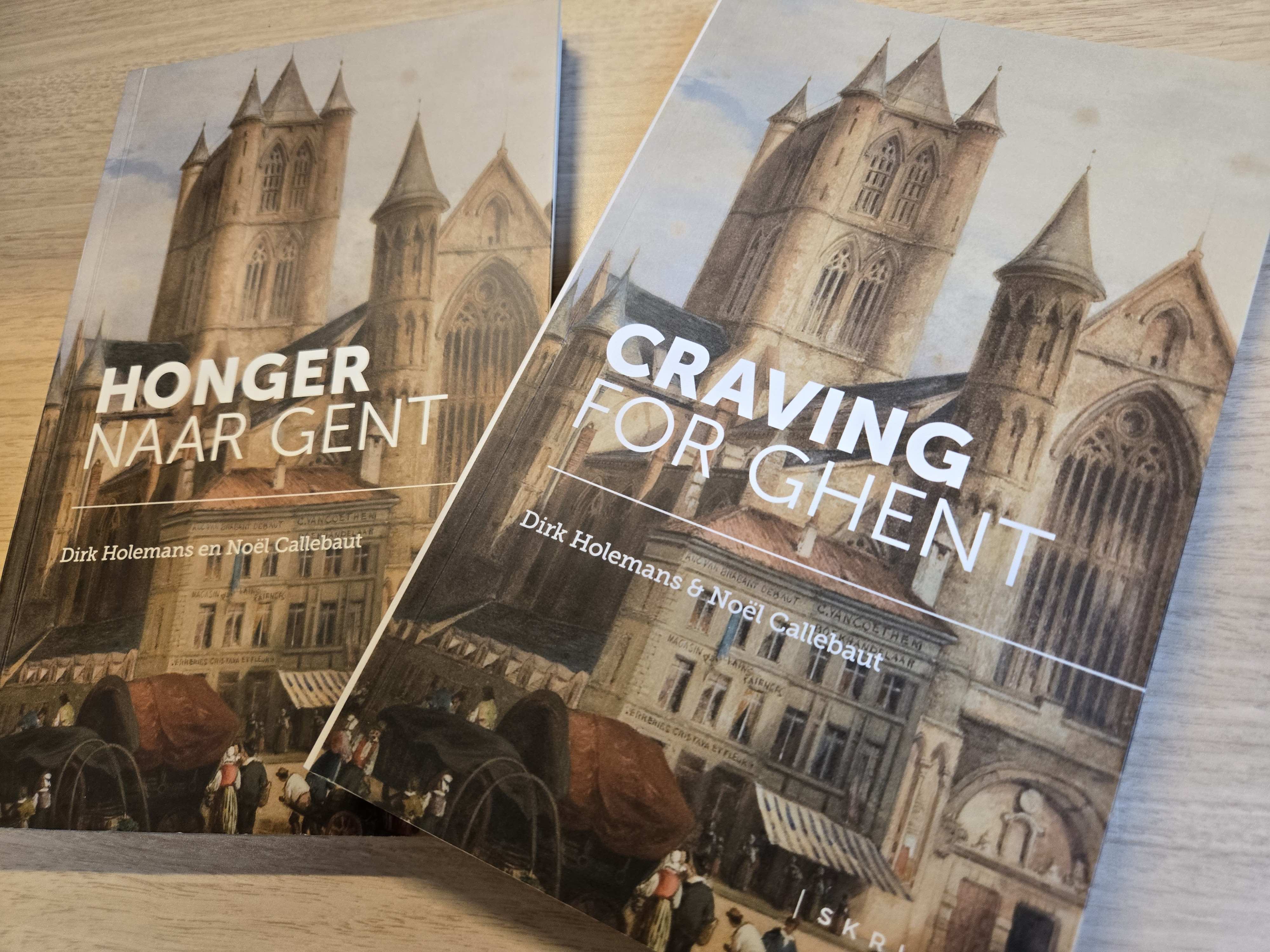Food is your complete guide to historical Ghent

What are the links between a city, its history and the way the people ate? If talking about Ghent, the book ‘Craving for Ghent’ gives you the answer. Via two walks in the city centre, the authors guide the readers through the two glory periods of Ghent. How was food brought in, how was it prepared, how did food shape the city?
Noël Callebaut and Dirk Holemans (both from Ghent, of course) are experienced city guides and storytellers. During the COVID-19 lockdown, they realised their dream of writing a book about the history of Ghent in a way that is attractive and easy to read. Since good food connects us all, in time and space, this became the angle.

The book consists of two parts, one on the 14th century, one on the 19th century. ‘In the 14th century, Ghent was one of the largest and most powerful European cities north of the Alps. With its walled area of 644 hectares, it was larger than Paris.’ In the 19th century, Ghent was called the ‘Manchester of Belgium’, this refers to ‘the rapid transformation of Ghent; a sleepy provincial city rudely awakened by the industrial revolution, rapidly filled with polluting factories’.
Callebaut and Holemans present the city in those two periods with a combination of a walk along the monuments, historic events, anecdotes about daily life in those days, and with several recipes that the reader can prepare and eat.
Menu of the poor and the rich
In the 14th century, the average worker spent at least three-quarters of his income on basic food. ‘Fruit was available to all, as was cheese, as an important source of protein. Occasionally, some meat or fish supplemented this humble workers’ menu. Things were completely different among more affluent groups in the city’. Their menu included ‘meat, fish and poultry – think oysters and pheasant, accompanied by quality French wine’. Produce from many parts of the world was available.
The menus of the rich and of the poor were more distinct at the time of the Industrial Revolution. The latter ‘survived on mainly bread and potatoes’, while ‘the bourgeoisie continued their flamboyant displays of consumption, showing their wealth by what and where they ate and drank’.
The fine part of ‘Craving in Ghent’ is that the reader learns about history in different ways. The book includes maps of the city, so you can walk through the streets and over the rivers where the history happened. You can visualise the transport of food, and the disposal of waste. You see the buildings where the people worked, ate and slept. And back home, you can prepare the food they ate.
‘We are proud to be from Ghent’, Noël Callebaut says, ‘but we dare to be critical’. The book was first published in Dutch in 2021. At the demand of tourists and museums, the English version is now available.
‘Craving for Ghent’ (129 pages, 25 euros) will be presented today, at 11h in Ghent, in travel bookstore Atlas & Zanzibar. Sales, guided walks and info: noel.callebaut@telenet.be
#FlandersNewsService | The medieval port is now a restaurant area. © BELGA PHOTO JAMES ARTHUR GEKIERE